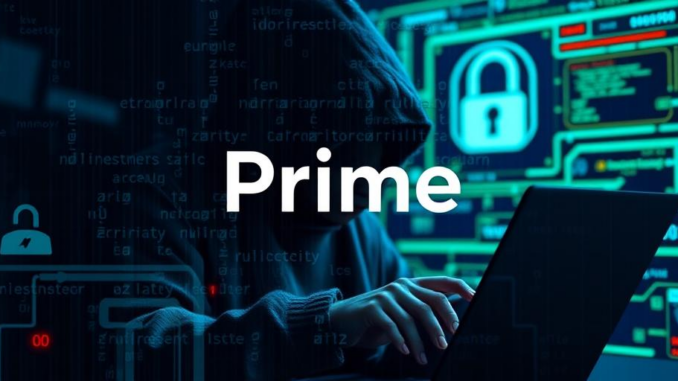
Summary
The Malaysian Prime Minister refused a $10 million ransom demand following a cyberattack on Kuala Lumpur International Airport. This decisive action underscores a growing global trend of governments and organizations resisting ransomware attacks. The refusal also highlights the importance of robust cybersecurity measures.
Explore the data solution with built-in protection against ransomware TrueNAS.
** Main Story**
So, Malaysia’s Prime Minister Anwar Ibrahim recently took a pretty hard line against cybercrime, which I think is great. He refused to pay a whopping $10 million ransom after a ransomware attack hit Kuala Lumpur International Airport (KLIA), you know, the country’s main airport. This whole thing has kicked off a bunch of conversations about how big of a deal ransomware is these days and whether paying up is ever the right move. Let’s dive into what happened, what the PM’s choice means, and the bigger picture of ransomware attacks, both in Malaysia and around the globe.
The KLIA Attack and Standing Firm
Okay, so the cyberattack on KLIA messed with the airport’s systems, supposedly causing some disruptions for hours. We don’t have all the details, but word is that the flight information screens, check-in stuff, and even baggage handling were affected. Can you imagine the chaos? I even read reports that airport staff were using whiteboards to show flight info – talk about going old school! Though, I did see that the Malaysian Airports Holdings Berhad (MAHB) and the National Cyber Security Agency (NACSA) kinda downplayed how much it actually impacted operations. Whatever the truth is, it wasn’t good.
Prime Minister Ibrahim wasn’t messing around, though. He flat-out refused to pay the hackers their $10 million. He said giving in would be a really bad move, like giving criminals a green light and risking national security. And it’s not just him – more and more governments and companies are refusing to play ball with these ransomware attackers. And rightly so, in my opinion.
Ransomware: A Global Headache
This KLIA thing isn’t a one-off, not by a long shot. Ransomware attacks are hitting everyone – businesses, governments, and even critical infrastructure, all over the world. Basically, they lock up your data and demand money to unlock it. And the cost of these attacks – the ransom itself, fixing the mess, and the downtime – it’s all skyrocketing.
Malaysia’s definitely seen its share of ransomware lately. I saw a report saying there was a 78% jump in ransomware cases in Q4 2024 compared to the previous quarter. It’s getting worse out there. And the average ransom demand has gone up to $5.3 million, so, yeah, it’s a big financial hit.
What Happens When You Say ‘No’?
Deciding whether to pay a ransom is a tough call, you know? There are pros and cons either way. If you refuse, you’re hoping to deter future attacks and not fund criminal activity. But on the other hand, they might leak your stolen data or keep your systems down for ages, which is even more bad press.
In the KLIA situation, the hackers threatened to release data they stole from the airport’s servers onto the dark web. We don’t know exactly what that data is, but if it’s sensitive stuff, it could be a major problem for both national security and people’s privacy. It’s a gamble, there’s no doubt about it.
Time to Beef Up Security
The KLIA attack really highlights how crucial it is to have strong cybersecurity. Prime Minister Ibrahim stressed that we need to spend more on protecting critical infrastructure and financial institutions, which I think is spot on. That means better prevention, solid incident response plans, and making sure we can back up and recover our data. I mean, are we really doing enough to protect ourselves?
So, what can companies do to lower their risk of being hit by ransomware? Well, for starters:
- Keep Software Updated: This patches vulnerabilities.
- Use Strong Passwords and Multi-Factor Authentication: Makes it harder for attackers to get in.
- Train Employees: Teach them about phishing and how to spot scams. Honestly, this is where a lot of breaches start.
- Back Up Data: If you get hit, you can restore your data without paying. I can’t stress how important this is.
- Have a Plan: A clear incident response plan helps you react quickly and minimize the damage.
Look, the KLIA thing is a wake-up call. As of right now – April 9, 2025 – ransomware attacks are constantly evolving. The attackers are getting smarter, and their tactics are more aggressive. We all – governments, businesses, and individuals – need to stay alert and take serious security measures to stay safe out there, no matter how annoying keeping on top of it is.


Given the increasing sophistication of ransomware attacks, as highlighted by the KLIA incident, what innovative cybersecurity strategies, beyond current best practices, might prove most effective in deterring and mitigating such threats in the future?
That’s a great point about needing innovative strategies! Beyond current best practices, I think focusing on AI-powered threat detection and proactive threat hunting could be game-changers. Also, investment in cyber security is paramount. What are your thoughts on the role of international collaboration in combating these threats?
Editor: StorageTech.News
Thank you to our Sponsor Esdebe
Whiteboards, huh? Talk about a security downgrade! I bet the hackers were thrilled – old-school tech is probably easier to crack than the fancy stuff. Wonder if anyone suggested carrier pigeons as a backup? At least *they* can’t be ransomed… probably.
Ha! The whiteboard situation definitely raised some eyebrows. It highlights the immediate need for solutions when systems go down. While carrier pigeons might be a *bit* extreme, it sparks an interesting conversation about secure, low-tech backup communication methods during a cyber crisis. What innovative alternatives can we explore?
Editor: StorageTech.News
Thank you to our Sponsor Esdebe